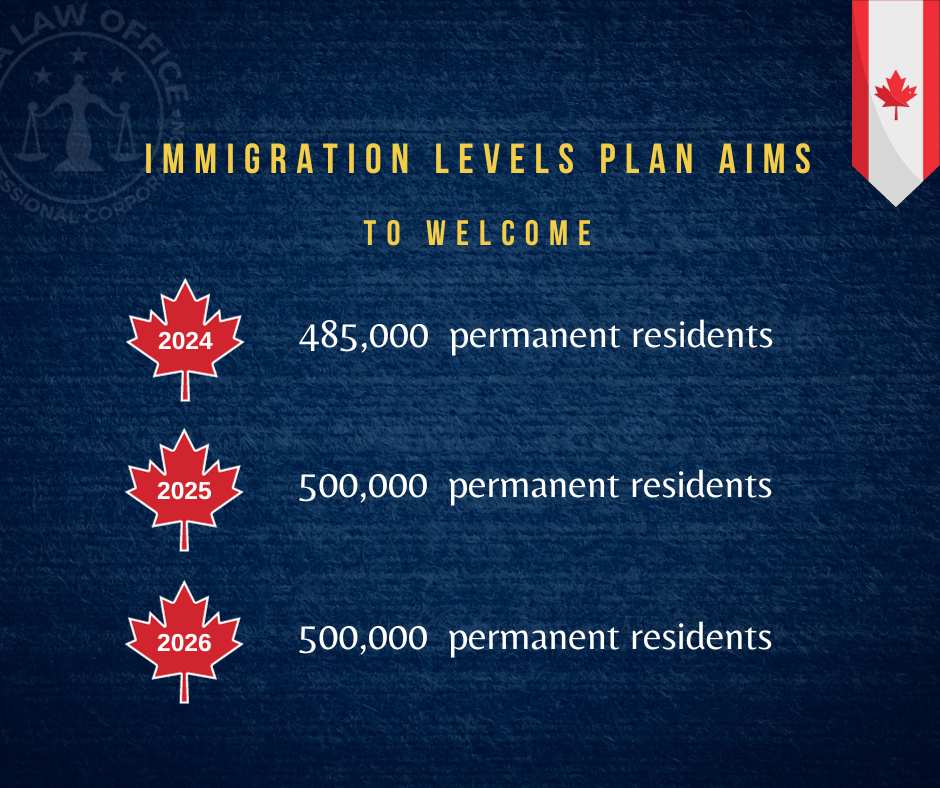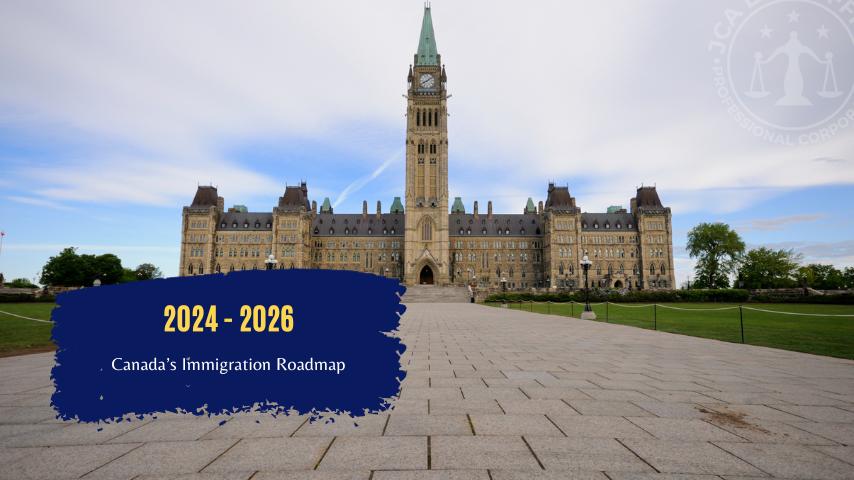In a much-anticipated event, Minister Marc Miller of Immigration, Refugees, and Citizenship presented Canada’s Immigration Levels Plan for 2024-2026 in Ottawa on November 1, 2023. This roadmap outlines Canada’s immigration strategy, with a focus on getting more francophones and French-speaking permanent residents, responding to demographic shifts and labor market demands, but at the same time bringing some fresh perspectives to the table.

Crucial Aspects of the 2024-2026 Immigration Levels Plan:
Economic Class Emphasis: By 2025, over 60% of permanent resident admissions will be directed towards the economic class. This signals Canada’s unwavering commitment to promoting economic growth through immigration. The economic class includes skilled workers, entrepreneurs, and investors, all contributing to Canada’s workforce and prosperity.
Humanitarian Commitment: The plan reiterates Canada’s dedication to addressing humanitarian and geopolitical crises globally. This aligns with Canada’s long-standing tradition of providing refuge and participating in international humanitarian efforts.
Supporting Francophone Communities: A noteworthy aspect of the plan is its support for Francophone communities outside Quebec. The plan sets ambitious targets, designating 6% of total immigration for 2024, 7% for 2025, and 8% for 2026 to Francophone immigration. This not only safeguards the French language and culture but also enriches Canada’s cultural mosaic.
Digital Advancements: The plan acknowledges the significant progress made by Immigration, Refugees, and Citizenship Canada (IRCC) in digital systems and client services. These advancements have resulted in increased processing capabilities and a reduction in application backlogs. This transition to digital systems enhances the overall efficiency of the immigration process, benefiting both applicants and government officials.
| 2024 – 2026 IMMIGRATION LEVEL PLANS AT A GLANCE | |||
|---|---|---|---|
| IMMIGRATION CLASS | 2024 | 2025 | 2026 |
| Economic (Federal /Business / Atlantic/ Provincial Nominee/ Skilled/ Quebec skilled workers/ French speaking | 281,135 | 301,250 | 301,250 |
| Family (Includes Spouses, Partners, Children/Minor dependents and PGP) | 114,000 | 118,000 | 118,000 |
| Refugees and Protected persons | 76,115 | 72,750 | 72,750 |
| Humanitarian and Compassionate/Other | 13,750 | 8,000 | 8,000 |
| TOTAL PLANNED PR ADMISSIONS | 485,000 | 500,000 | 500,000 |
What are the next steps?
The Government of Canada has set an ambitious target of welcoming 485,000 permanent residents (PR’s) in 2024, with the goal to reach 500,000 in 2025, and plans to maintain a stable annual intake of 500,000 permanent residents for 2026 onwards. However, it’s essential to keep in mind that these figures depend on the current government remaining in power. A change in leadership, such as the Conservative Party taking the helm, could significantly alter these annual immigration numbers.
A key feature of Canada’s new approach is its commitment to collaborating with provinces, territories, employers, stakeholders, and Indigenous groups. This collaborative effort aims to effectively address the consequences of a population increase driven by immigration. This approach takes cues from the report titled “An Immigration System for Canada’s Future.”
Recognizing the importance of sustainable immigration, the government also plans to review the number of temporary resident admissions in the coming year, aiming to strike a balance in this segment of the immigration system.
Conclusion
Canada’s 2024-2026 Immigration Levels Plan represents a forward-looking vision for the country’s immigration landscape. It reflects Canada’s commitment to growth and diversity through immigration, with a focus on the economic class, while also addressing global humanitarian challenges. The plan’s support for Francophone communities showcases Canada’s dedication to cultural diversity. Additionally, the adoption of digital advancements promises a more efficient immigration system, improving the experience for all involved. As with any immigration plan, it’s important to remember that the numbers can change with shifts in political leadership, making this a dynamic aspect of Canada’s evolving immigration story.

